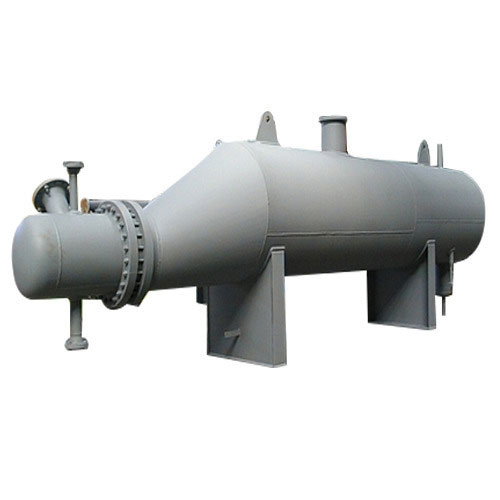Kettle Reboiler Type Heat Exchanger
Kettle reboilers are very simple and reliable. They may require pumping of the column bottoms liquid into the kettle, or there may be sufficient liquid head to deliver the liquid into the reboiler. In this reboiler type, steam flows through the tube bundle and exits as condensate. The liquid from the bottom of the tower, commonly called the bottoms, flows through the shell side. There is a retaining wall or overflow weir separating the tube bundle from the reboiler section where the residual reboiled liquid (called the bottoms product) is withdrawn, so that the tube bundle is kept covered with liquid.Kettle reboilers are reliable in that they can handle high vaporization of up to 80 percent and are easy to maintain. The liquid from the bottom of the tower flows through the tube bundle and exits as condensate. A restraining device (baffle) controls the liquid level over the bundle.
Specifications
Proper reboiler operation is vital to effective distillation. In a typical classical distillation column, all the vapor driving the separation comes from the reboiler. The reboiler receives a liquid stream from the column bottom and may partially or completely vaporize that stream. Steam usually provides the heat required for the vaporization.
Applications
The high level of vaporization makes it prone to fouling, and these reboilers are expensive due to their large shell size and maintenance.
Advantages
Reboilers are heat exchangers typically used to provide heat to the bottom of industrial distillation columns.
They boil the liquid from the bottom of a distillation column to generate vapors which are returned to the column to drive the distillation separation.

